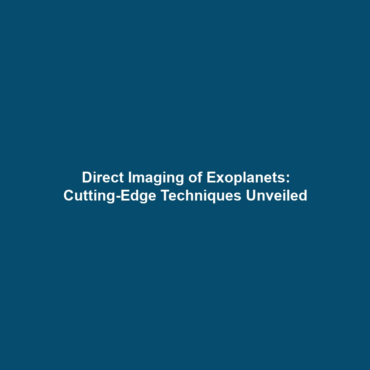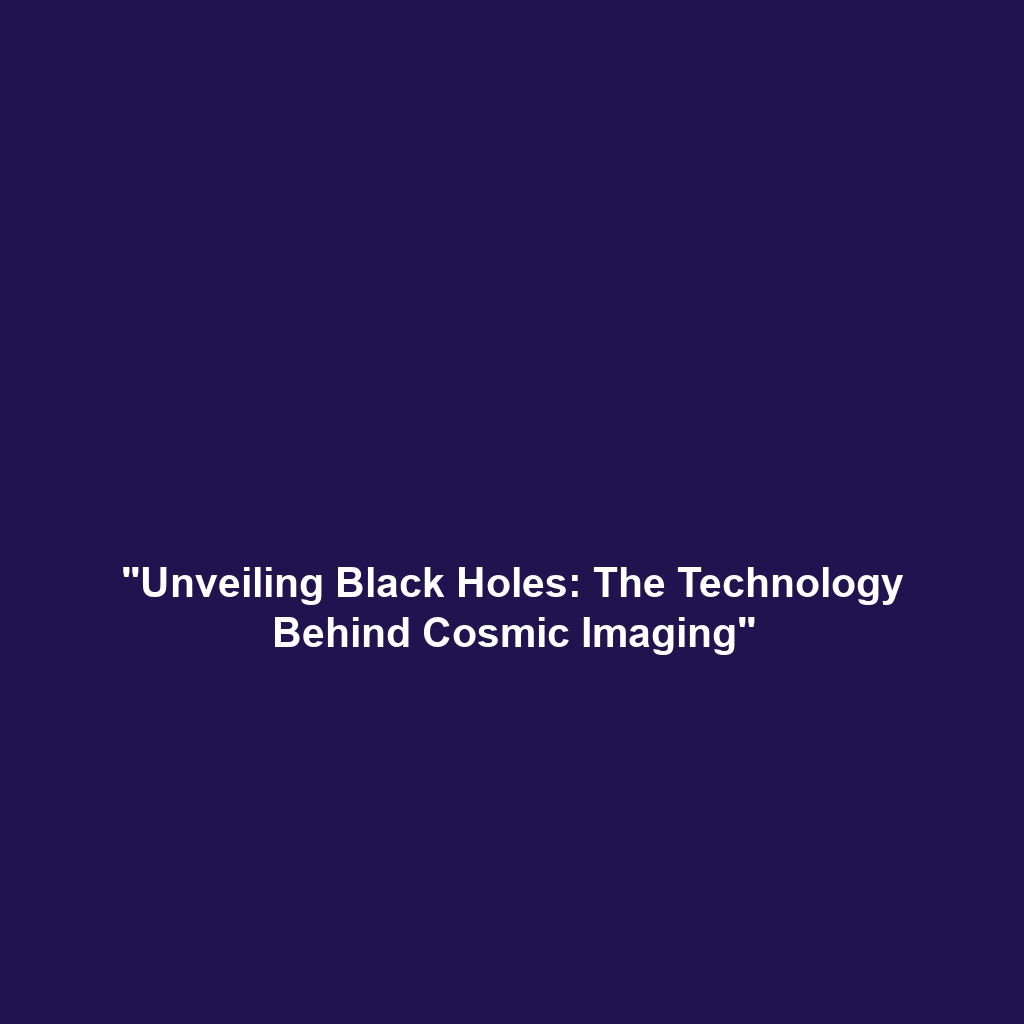<>
Direct Imaging: A Look at the Most Advanced Techniques Used to Capture Direct Images of Exoplanets
Introduction
Direct imaging techniques have revolutionized the way scientists detect and study exoplanets. By capturing images of these distant worlds, researchers can analyze their atmospheres and potential habitability, expanding our understanding of the universe. This article delves into the advanced methods of direct imaging that make this possible, highlighting their significance in the broader context of exoplanet exploration.
Key Concepts
Direct imaging involves capturing light from an exoplanet directly, rather than inferring its presence through indirect methods like transit or radial velocity measurements. This technique allows astronomers to study the planetary atmospheres, detect potential biosignatures, and measure the planet’s physical characteristics. Below are some of the key concepts related to direct imaging:
1. Coronagraphy
This technique uses a device called a coronagraph to block out the light from a star, which enhances the visibility of nearby planets. By suppressing the overwhelming brightness of a star, astronomers can observe the faint light emitted by its orbiting exoplanets.
2. Starshade Technology
Starshades function similarly to coronagraphs but are deployed a distance away from the telescope. This innovative method allows for even greater blockage of starlight, improving image quality and facilitating the detection of fainter exoplanets.
Applications and Real-World Uses
The applications of direct imaging in exoplanet research are expansive and transformative:
- Atmospheric Studies: Direct imaging enables the analysis of exoplanet atmospheres, helping scientists identify gases that may indicate biological activity.
- Discovery of Earth-like Exoplanets: This technique aids in locating exoplanets within the habitable zone of their stars, which is crucial for finding worlds suitable for life.
- Planetary Characterization: It allows for the detailed measurement of exoplanet sizes, temperatures, and compositions, giving insights into their potential for supporting life.
Current Challenges
Despite its promise, direct imaging faces several challenges that limit its effectiveness in the study of exoplanets:
- Light Pollution: The overwhelming brightness of stars can obscure the faint light from nearby planets.
- Optical Limitations: Current imaging technology may struggle with resolution and contrast needed for detection of smaller, Earth-like exoplanets.
- Distance Constraints: Most exoplanets are light-years away, making it difficult to obtain detailed images.
Future Research and Innovations
The field of direct imaging is ripe for innovation, with several exciting advancements on the horizon:
- Next-Generation Space Telescopes: Upcoming missions like the James Webb Space Telescope (JWST) and the Habitable Exoplanet Observatory (HabEx) promise to enhance our capability to capture direct images of exoplanets.
- Machine Learning Algorithms: Innovative software solutions are being developed to improve image processing and interpretation, allowing for more efficient extraction of meaningful data.
- Enhanced Instruments: New adaptive optics systems will correct atmospheric distortion, increasing the clarity and detail of captured images.
Conclusion
In summary, direct imaging represents a groundbreaking approach in the ongoing quest to uncover and study exoplanets. By overcoming current challenges and fostering future innovations, astronomers can greatly enhance our understanding of these distant worlds. For those interested in exploring this topic further, consider reading about related technologies or ongoing exoplanet missions.

